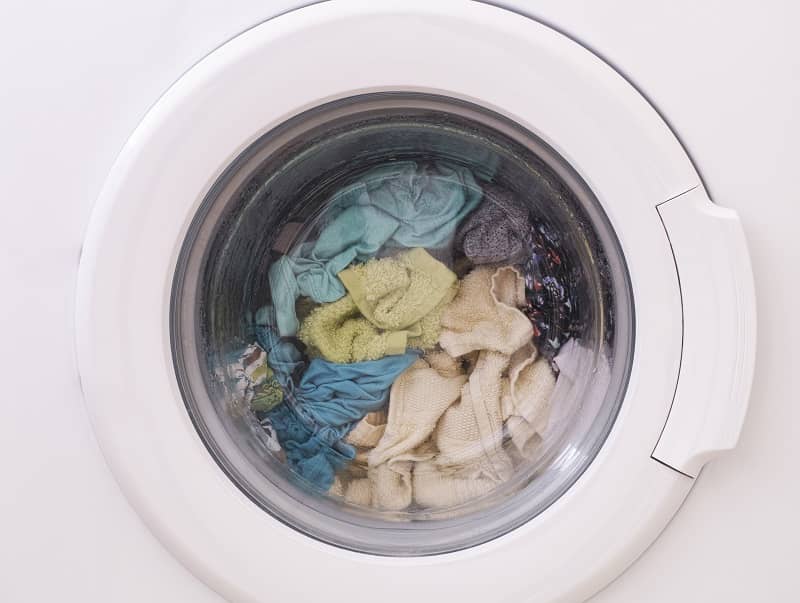There are a lot of laundry room tips and tricks passed along by oral tradition intended to help people keep their clothes clean, stain-free, and smelling fresh. In reality, there are some fairly widespread myths that actually end up damaging your clothes instead of making them cleaner. Let’s pinpoint some of these misconceptions so you can save time and energy by making your laundry trips as efficient as possible.
You can completely fill the washer.
We’ve all been guilty of stuffing the washing machine to the brim in an effort to get as many clothes clean as possible. The general misconception is that if the clothes fit and the washer runs, then the clothes must be clean at the end of the cycle. In reality, you get less clean for your buck the more clothes you stuff into a load. The detergent will struggle to get in direct contact with each item of clothing. Plus, there will be less water for every article. In general, you should never fill up a washing machine to more than 75% of its capacity.
Clothes should be washed after every use.
No matter what you might’ve heard, your clothes don’t need to get washed after every use. Not only is this a great way to run up your energy costs but overwashing can limit the lifespan of your clothes. All fabrics become more susceptible to damage the more they’re washed. The tumbling in the washer and dryer, the high temperatures, and even the detergent can have a detrimental effect when done too often. Other than undergarments and workout attire, most clothes can go multiple uses before needing a wash without smelling bad.
The hotter the water, the cleaner the clothes.
Hot water doesn’t always mean cleaner clothes. In the past, the water temperature was one of the primary ways washing machines killed bacteria and remove stains. However, modern detergents are effective at cleaning clothes even in cooler water. Always setting the washer to the highest temperature setting can ruin some fabrics and even cause stains. Always read clothing labels to know what kind of water temperature is ideal. You’ll keep your clothes in better condition while still ensuring they get the proper and thorough clean you need. When in doubt, a warm setting is a good balance to strike.
The more detergent the better.
The old adage about too much of a good thing going bad is applicable to the laundry room when it comes to using detergent. It’s vital for keeping clothes clean, but there’s a point of diminishing returns. Just because you toss in more detergent doesn’t mean it’s going to work harder to clean your clothes. There is an ideal amount at which point your clothes will get as clean as possible. Beyond that point, you run the risk of having excess detergent leaving residue. Always consult the detergent label to determine precisely how much to use given the load size and type of clothes.
There’s no such thing as too many dryer sheets.
Dryer sheets are the unsung heroes of the drying cycle. They help speed up drying time while leaving your clothes smelling fresh and sweet. These advantages make it tempting to throw in a generous amount of dryer sheets with the expectation that you’ll just get more of those benefits. Instead, your dryer will struggle to operate optimally as the residue from the dryer sheets will quickly clog up the lint trap and lead to congestion. One or two dryer sheets are more than enough depending on how many clothes you’re drying at once.
Interested in learning more about how you can optimize your trips to the laundry facility? Check out Coin Meter to get insider tricks and tips for doing laundry like a pro.


